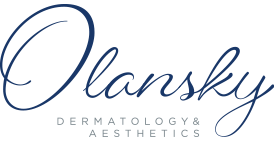Ultraviolet (UV) radiation can come from the sun, as well as man-made sources such as tanning beds. Different types of UV rays have varying energy levels. Higher-energy rays are more likely to damage the DNA in our cells, potentially leading to skin cancer. Here, we explore some of the most common of these UV radiation sources, and their suspected level of risk.
Sources of UV Exposure & Their Risks
Sunlight
It’s no secret that sunlight is one of the most notorious causes of skin cancer. According to the CDC, long-term exposure to the sun’s UV rays increases your risk, especially if you’re fair-skinned or have a family history of skin cancer. Of course, that doesn’t mean you have to avoid the sun altogether. There are plenty of safe sun practices you can follow to keep your skin protected while enjoying the outdoors.
Tanning Beds
Indoor tanning with tanning beds, tanning booths, or sun lamps is often mistakenly perceived as being safer than sun exposure. In reality, indoor tanning should be considered just as dangerous as sun exposure — if not more so. Indoor tanning increases your risk of all types of skin cancer, including melanoma, with each use. The FDA considers the risk so significant that they now require a warning label on all indoor tanning devices.
Gel Manicure Lamps
Gel polishes create a hard, long-lasting finish when cured with a UV lamp. Yet, they present concerns for exposure to UVA radiation. Though UVA rays have the least amount of energy of all UV rays, they may still cause DNA damage over time. While a 2014 JAMA Dermatology study found that biweekly gel manicures are unlikely to increase the risk of skin cancer significantly, there’s no harm in protecting yourself by applying sunscreen before your appointment. Be sure to coat all the surfaces of your hands with a waterproof sunscreen containing an SPF of 30 or higher.
Mercury Vapor Lighting
Mercury vapor lamps are a popular choice for streetlights, school gyms, sports arenas, banks, and other public places. The bulbs are known for their brightness and longevity, but they’re also a source of UV radiation. For this reason, they feature an outer glass encasement that filters out any potentially harmful rays. As long as the outer bulb is intact and the bulbs are operating under normal conditions, this light source is considered safe.
Plasma Torches & Welding Arcs
The UV radiation in a welding arc or plasma torch can burn exposed skin just like UV rays from the sun. While 2004 research published in The Medical Journal of Australia concluded that “the relationship between arc welding and skin cancer risk did not reveal an increased incidence of skin cancer in welders,” the study also notes that all welders assessed were well-protected, and exposure periods were limited. There is an established link between welding professions and eye conditions such as conjunctivitis and cataracts, as well as ocular melanoma, so all welders should therefore wear full protective gear — including a helmet with eye protection — any time they’re working with welding equipment.
While you can’t undo past UV exposure, you can be safe moving forward. Part of a comprehensive approach to UV safety includes routine skin cancer checks. Schedule an appointment for your screening with our team — connect with us online or call (404) 355-5484.


